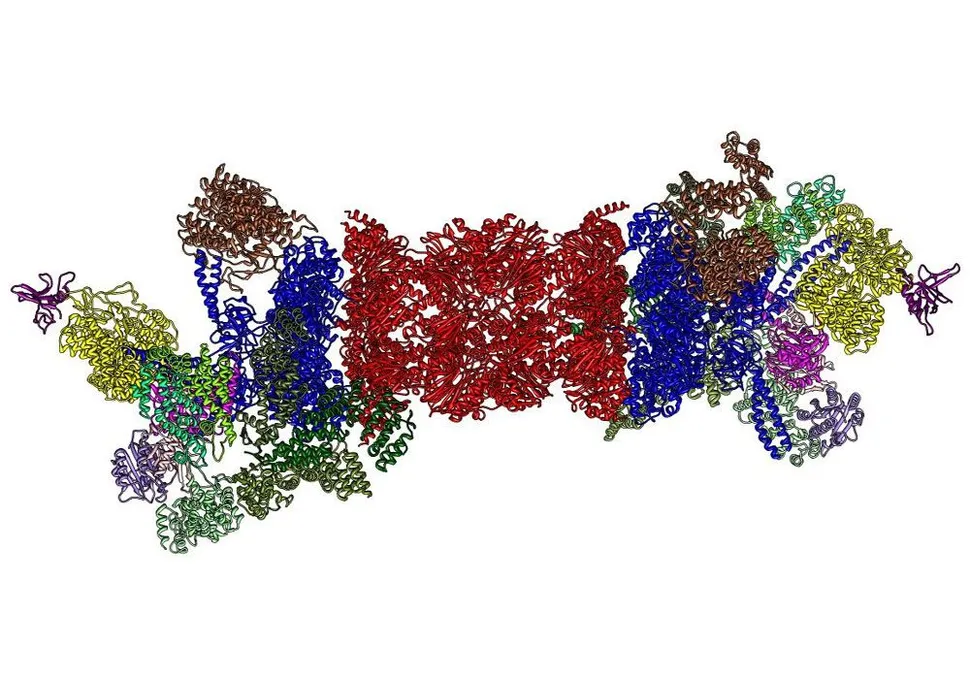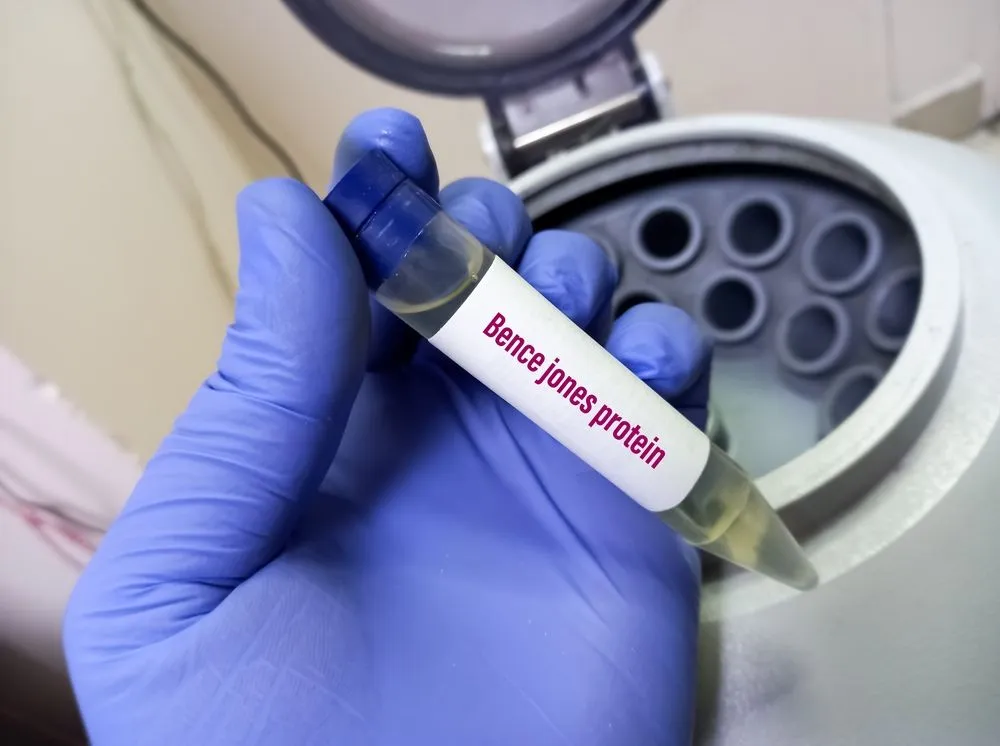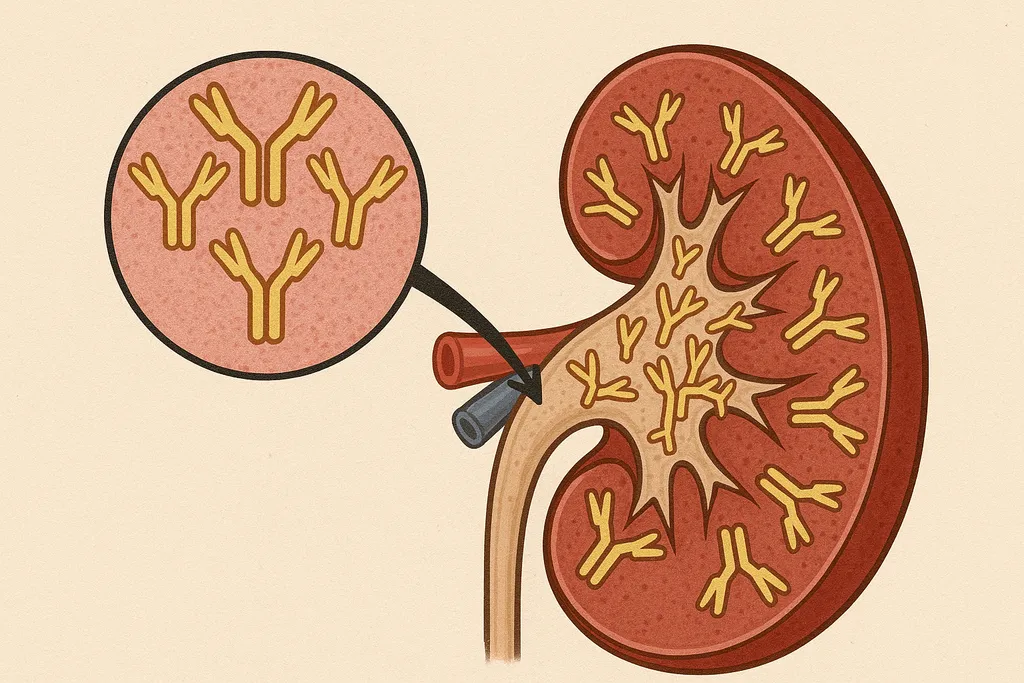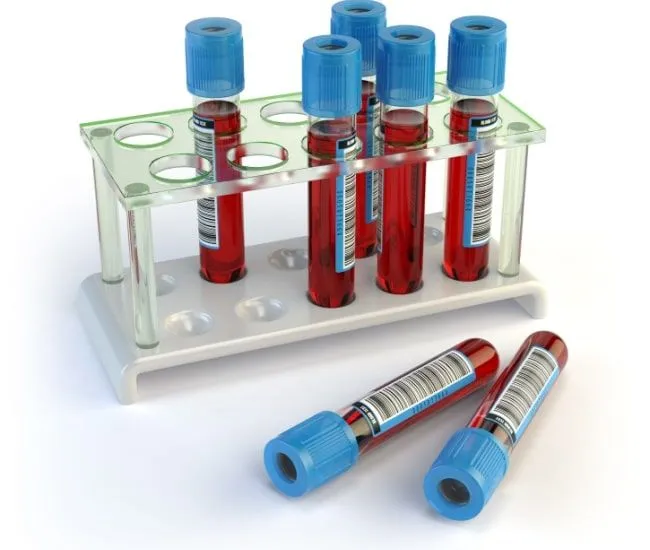Proteasome Inhibitors: Still a Powerful Weapon Against Myeloma

Proteasome Inhibitors are a Staple in Multiple Myeloma Therapy
Why do new versions of this important drug class continue to be developed, even in the age of immunotherapies? It's simple: they still work to kill myeloma cells.
Every cell’s life is started by protein messages. The cell begins with instructions from DNA that are communicated through messenger RNA and is then governed by chemical signals derived from proteins for as long as it lives. Protein messages from DNA master blueprints are constantly passing within cells. Messenger RNA makes protein activation happen (switches turned on) and can instantly change to protein de-activation (switched off). This activation might happen once per lifetime (telling cells to develop into what type of tissue) or can happen as often as several times per second! This signaling can come from biochemical changes (acetylation, de-acetylation, hydroxylation, de-hydroxylation) or from structural changes (folding or unfolding of protein structures so that they fit or do not fit in activation targets). In short, the creation of proteins is complicated!!
What Are Proteasomes?
Proteasomes are tiny, barrel-shaped structures found in all cells. Their job is to rid the cell of misfolded, “used”, and non-functional proteins like a garbage disposal. Once these proteins are broken up, the cell can then use them to make new proteins that it might need. The discovery of the proteasome was made through key research of Dr. Alfred Goldberg, PhD of Harvard Medical School in the early 1990s.
Although normal cells make proteins, so do cancerous plasma cells - but they make much more significant amounts of useless, ineffective protein. When a proteasome inhibitor stops this protein "recycling," it allows the protein to build up until it blows the cell up. The cell dies of built-up bad, accumulated waste.
According to Dr. Ken Anderson, MD of the Dana Farber Cancer Institute, myeloma plasma cells tend to be quite smart. They change their metabolism to eliminate the protein waste by an alternate method. Instead of ubiquitination and metabolism through the proteasome pathway, those smart cells get rid of protein waste by an aggresome pathway. They bypass the proteasome altogether (thus becoming resistant to proteasome inhibitor drugs).
What can myeloma drugs do at that point?
Block the aggresome pathway too! Use Panobinostat or Vorinostat, which effectively block that escape pathway. By themselves, HDAC blockers are not very effective, but when combined with PI’s, they are a one-two effective punch to kill cells desperately needing to get rid of their own protein waste material.
Bortezomib (or Velcade) has been used since 2003 for over half a million patients. Carfilzomib and ixazomib were approved for use for relapsed/refractory myeloma patients in 2016 and new proteasome inhibitors are continuing to be developed.
What Are Reversible and Irreversible Proteasome Inhibitors?
Bortezomib, ixazomib, carfilzomib, oprozomib, and marizomib are not the same type of proteasome inhibitor. According to Dr. Robert Z. Orlowski, MD, PhD of the MD Anderson Cancer Center, one type is reversible, and the other is irreversible.
- Reversible inhibitors (like bortezomib and ixazomib) bind to their target on the proteasome and form one covalent bond, but at some point the bond between the drug and the target breaks (like a wet band-aid falling off). This frees up the proteasome to return to its normal function of digesting proteins in the cell. Thus, the return of proteasome function in this setting is a combination of the drug releasing the already formed proteasomes and production by the cell of new proteasomes that are functional after bortezomib is out of the system.
- Irreversible inhibitors (like carfilzomib, oprozomib, and marizomib) bind to their target on the proteasome and form two covalent bonds, and because of that this is a stronger attachment (like a waterproof band-aid). This makes it much harder to free up the proteasome to return to its normal function of digesting proteins in the cell, and the inhibition is therefore much longer lasting. Thus, the return of proteasome function in this setting is due only to the production by the cell of new proteasomes that are functional after carfilzomib is out of the system. Because there is only this one mechanism for proteasome recovery to occur instead of two, it takes longer for proteasome function to return.
What Are Proteasome Inhibitors' Side Effects?
Patients love the myeloma cell-killing effects, but this class of drugs can be associated with peripheral neuropathy or tingling, burning, or loss of feeling in the hands or feet. This can be particularly bad for patients who already have neuropathy due to their myeloma or other diseases like diabetes. In an interview on Myeloma Crowd Radio, Dr. Laubach explains how using the subQ version or the new oral proteasome inhibitor ixazomib can help reduce neuropathy:
"The subcutaneous formulation of bortezomib or administration of bortezomib I should say is definitely associated with less neuropathy than intravenous bortezomib, but the rates of neuropathy appear to be significantly lower still further with ixazomib as compared to subcutaneous bortezomib. Currently ixazomib is FDA approved as you know for relapsed multiple myeloma on the basis of the Tourmaline Clinical trial which was just published in the past few weeks in the New England Journal of Medicine. It’s quite possible that in the coming years, its approval will also be applied in newly diagnosed disease."
The proteasome inhibitor carfizomib is also highly effective at lower doses and has a lower incidence of neuropathy but can be associated with vascular or cardiac issues in a very small number of patients, so check with your doctor to see what is right for you.
Which Proteasome Inhibitor is Better, Infusion, SubQ, or Oral?
These drugs can be administered in three ways - as an infusion (bortezomib and carfilzomib), as a shot usually given in the abdominal area (bortezomib), and as an oral pill (ixazomib). If you're on Velcade, should you switch to the new oral version? For now, Dr. Laubach's answer today is, "If it ain't broke, don't fix it" but it's important to have that conversation with your doctor as you explore the possibility of greater convenience.
"If you are currently responding to a given therapy and tolerating it well, it’s generally advisable to stick with that particular agent or regimen of agents. The old saying that one in the hand is better than two in the bush definitely applies to myeloma therapy. If you are responding to something well, tolerating it well, stick with it and wait until it is either no longer working or is producing intolerable side effects, to make a change in your therapy."
Up and Coming Proteasome Inhibitors
Continue Learning about Myeloma Treatment with HealthTree University for Multiple Myeloma
Learn from experts such as Dr. Alexander Lesokhin from Memorial Sloan Kettering Cancer Center, who explains the concept of proteasome inhibitors in the video below. Sign up for a free account to access more informative videos like this.
Proteasome Inhibitors are a Staple in Multiple Myeloma Therapy
Why do new versions of this important drug class continue to be developed, even in the age of immunotherapies? It's simple: they still work to kill myeloma cells.
Every cell’s life is started by protein messages. The cell begins with instructions from DNA that are communicated through messenger RNA and is then governed by chemical signals derived from proteins for as long as it lives. Protein messages from DNA master blueprints are constantly passing within cells. Messenger RNA makes protein activation happen (switches turned on) and can instantly change to protein de-activation (switched off). This activation might happen once per lifetime (telling cells to develop into what type of tissue) or can happen as often as several times per second! This signaling can come from biochemical changes (acetylation, de-acetylation, hydroxylation, de-hydroxylation) or from structural changes (folding or unfolding of protein structures so that they fit or do not fit in activation targets). In short, the creation of proteins is complicated!!
What Are Proteasomes?
Proteasomes are tiny, barrel-shaped structures found in all cells. Their job is to rid the cell of misfolded, “used”, and non-functional proteins like a garbage disposal. Once these proteins are broken up, the cell can then use them to make new proteins that it might need. The discovery of the proteasome was made through key research of Dr. Alfred Goldberg, PhD of Harvard Medical School in the early 1990s.
Although normal cells make proteins, so do cancerous plasma cells - but they make much more significant amounts of useless, ineffective protein. When a proteasome inhibitor stops this protein "recycling," it allows the protein to build up until it blows the cell up. The cell dies of built-up bad, accumulated waste.
According to Dr. Ken Anderson, MD of the Dana Farber Cancer Institute, myeloma plasma cells tend to be quite smart. They change their metabolism to eliminate the protein waste by an alternate method. Instead of ubiquitination and metabolism through the proteasome pathway, those smart cells get rid of protein waste by an aggresome pathway. They bypass the proteasome altogether (thus becoming resistant to proteasome inhibitor drugs).
What can myeloma drugs do at that point?
Block the aggresome pathway too! Use Panobinostat or Vorinostat, which effectively block that escape pathway. By themselves, HDAC blockers are not very effective, but when combined with PI’s, they are a one-two effective punch to kill cells desperately needing to get rid of their own protein waste material.
Bortezomib (or Velcade) has been used since 2003 for over half a million patients. Carfilzomib and ixazomib were approved for use for relapsed/refractory myeloma patients in 2016 and new proteasome inhibitors are continuing to be developed.
What Are Reversible and Irreversible Proteasome Inhibitors?
Bortezomib, ixazomib, carfilzomib, oprozomib, and marizomib are not the same type of proteasome inhibitor. According to Dr. Robert Z. Orlowski, MD, PhD of the MD Anderson Cancer Center, one type is reversible, and the other is irreversible.
- Reversible inhibitors (like bortezomib and ixazomib) bind to their target on the proteasome and form one covalent bond, but at some point the bond between the drug and the target breaks (like a wet band-aid falling off). This frees up the proteasome to return to its normal function of digesting proteins in the cell. Thus, the return of proteasome function in this setting is a combination of the drug releasing the already formed proteasomes and production by the cell of new proteasomes that are functional after bortezomib is out of the system.
- Irreversible inhibitors (like carfilzomib, oprozomib, and marizomib) bind to their target on the proteasome and form two covalent bonds, and because of that this is a stronger attachment (like a waterproof band-aid). This makes it much harder to free up the proteasome to return to its normal function of digesting proteins in the cell, and the inhibition is therefore much longer lasting. Thus, the return of proteasome function in this setting is due only to the production by the cell of new proteasomes that are functional after carfilzomib is out of the system. Because there is only this one mechanism for proteasome recovery to occur instead of two, it takes longer for proteasome function to return.
What Are Proteasome Inhibitors' Side Effects?
Patients love the myeloma cell-killing effects, but this class of drugs can be associated with peripheral neuropathy or tingling, burning, or loss of feeling in the hands or feet. This can be particularly bad for patients who already have neuropathy due to their myeloma or other diseases like diabetes. In an interview on Myeloma Crowd Radio, Dr. Laubach explains how using the subQ version or the new oral proteasome inhibitor ixazomib can help reduce neuropathy:
"The subcutaneous formulation of bortezomib or administration of bortezomib I should say is definitely associated with less neuropathy than intravenous bortezomib, but the rates of neuropathy appear to be significantly lower still further with ixazomib as compared to subcutaneous bortezomib. Currently ixazomib is FDA approved as you know for relapsed multiple myeloma on the basis of the Tourmaline Clinical trial which was just published in the past few weeks in the New England Journal of Medicine. It’s quite possible that in the coming years, its approval will also be applied in newly diagnosed disease."
The proteasome inhibitor carfizomib is also highly effective at lower doses and has a lower incidence of neuropathy but can be associated with vascular or cardiac issues in a very small number of patients, so check with your doctor to see what is right for you.
Which Proteasome Inhibitor is Better, Infusion, SubQ, or Oral?
These drugs can be administered in three ways - as an infusion (bortezomib and carfilzomib), as a shot usually given in the abdominal area (bortezomib), and as an oral pill (ixazomib). If you're on Velcade, should you switch to the new oral version? For now, Dr. Laubach's answer today is, "If it ain't broke, don't fix it" but it's important to have that conversation with your doctor as you explore the possibility of greater convenience.
"If you are currently responding to a given therapy and tolerating it well, it’s generally advisable to stick with that particular agent or regimen of agents. The old saying that one in the hand is better than two in the bush definitely applies to myeloma therapy. If you are responding to something well, tolerating it well, stick with it and wait until it is either no longer working or is producing intolerable side effects, to make a change in your therapy."
Up and Coming Proteasome Inhibitors
Continue Learning about Myeloma Treatment with HealthTree University for Multiple Myeloma
Learn from experts such as Dr. Alexander Lesokhin from Memorial Sloan Kettering Cancer Center, who explains the concept of proteasome inhibitors in the video below. Sign up for a free account to access more informative videos like this.
about the author
Jennifer Ahlstrom
Myeloma survivor, patient advocate, wife, mom of 6. Believer that patients can contribute to cures by joining HealthTree Cure Hub and joining clinical research. Founder and CEO of HealthTree Foundation.
More on Core Education
Trending Articles
Upcoming Events




Get the Latest Multiple Myeloma Updates, Delivered to You.
By subscribing to the HealthTree newsletter, you'll receive the latest research, treatment updates, and expert insights to help you navigate your health.
Together we care.
Together we cure.
3x Faster.













